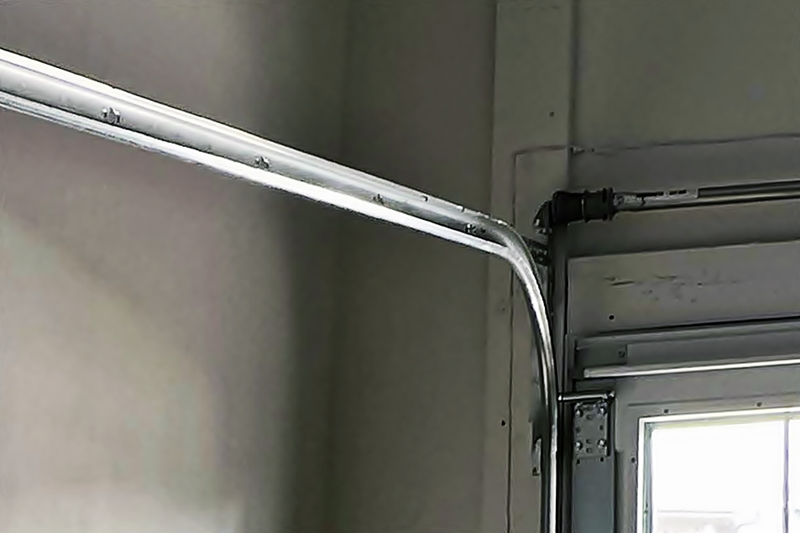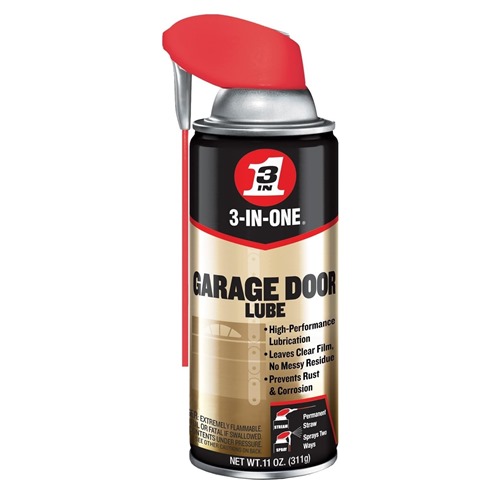Garage Door Track Guide: FAQs, Types, and Signs of Wear

Garage doors are essential to modern homes, providing security, convenience, and curb appeal. Among their key components are the garage door tracks, which guide the door’s movement as it opens and closes. These tracks may not always be visible, but they play a crucial role in the system’s functionality. When they malfunction, it can lead to noisy operations or even render your garage door unusable. Understanding how garage door tracks work and maintaining them properly can save you from unexpected repair costs. Read on to learn more about this critical part of your garage door system.
What Are Garage Door Tracks?
Garage door tracks are metal channels that guide the rollers attached to the door, ensuring smooth and controlled movement during operation. Typically made from galvanized steel, these tracks are durable and designed to withstand repeated use. They come in vertical and horizontal sections, forming a complete pathway for the door as it transitions between open and closed positions. Properly aligned tracks are essential for the safety and efficiency of your garage door system.
Garage Door Track Types

Garage door tracks are not one-size-fits-all. They are tailored to specific applications, ensuring optimal functionality based on the type of garage door system and the space available. Choosing the right track type is essential for achieving smooth operation and durability. Let’s explore the different types of garage door tracks:
Standard Lift Tracks
Standard lift tracks are the most common type, primarily used in residential settings. They feature a simple design with vertical and horizontal sections, making them ideal for homes with standard ceiling heights.
Vertical Lift Tracks
Vertical lift tracks are designed for industrial or commercial applications. These tracks allow the door to move straight up without transitioning to a horizontal position, making them ideal for facilities with high ceilings.
High Lift Tracks
High lift tracks are a hybrid between standard and vertical lift tracks. They are suited for homes with tall ceilings, providing extra vertical clearance before the door transitions horizontally.
Low Headroom Tracks
Low headroom tracks are specially designed for garages with limited overhead space. They feature a compact design that allows smooth operation even in tight spaces.
Below is a table comparing these track types based on their features:
| Track Type | Material | Typical Use | Durability | Cost |
|---|---|---|---|---|
| Standard Lift Tracks | Galvanized Steel | Residential Garages | High | Moderate |
| Vertical Lift Tracks | Heavy-Duty Steel | Industrial or Commercial Applications | Very High | High |
| High Lift Tracks | Galvanized Steel | Homes with High Ceilings | High | Moderate to High |
| Low Headroom Tracks | Galvanized Steel | Garages with Limited Space | Moderate | Low to Moderate |
Garage Door Track FAQs
Signs of misaligned tracks include a noisy garage door, uneven movement, or a door that struggles to open and close. You may also notice gaps between the tracks and the rollers or visible bends in the track itself. Addressing misalignment promptly can prevent further damage.
While minor adjustments like tightening bolts can be done by homeowners, repairing bent or severely damaged tracks requires professional expertise. DIY repairs may lead to improper alignment, increasing the risk of injury or further damage to your garage door system.
Garage door tracks should be inspected at least once a year as part of routine maintenance. Regular inspections help identify wear, misalignment, or damage early, ensuring safe and efficient operation. Professional servicing can provide a more thorough assessment.
Garage door tracks can bend or warp due to accidental impacts, such as a car hitting the door, or the strain from a misaligned system. Environmental factors like rust or corrosion can also weaken the tracks over time, leading to deformation.
To maintain your garage door tracks, clean them regularly to remove debris and dust. Lubricate the rollers and hinges to ensure smooth movement and check for visible signs of wear or damage. Scheduling professional maintenance annually can keep your system in top condition.
Yes, garage door tracks can often be replaced independently of the door or opener system. A professional technician can assess the extent of the damage and recommend whether replacing the tracks alone is sufficient or if additional repairs are needed.
Professional track replacement ensures proper alignment, safe operation, and compatibility with your existing system. Experts have the tools and knowledge to address underlying issues, reducing the risk of further damage and prolonging the lifespan of your garage door system.
Common Signs Your Garage Door Tracks Need Replacement

Over time, garage door tracks can show signs of wear and tear. Ignoring these signs can lead to more severe problems or even safety hazards. Here are some common indicators that your tracks might need replacement:
- Garage Door Won’t Close: Misaligned or obstructed tracks may prevent the door from closing completely.
- Unusual Noises: Grinding or screeching sounds during operation often point to misaligned or damaged tracks.
- Visible Damage: Bends, dents, or rust on the tracks can interfere with the door’s movement.
- Uneven Door Movement: A garage door that moves unevenly or gets stuck midway could indicate track issues.
- Frequent Misalignment: If your tracks often require realignment, it may be time to replace them.
- Worn Out Rollers: Damaged tracks can cause excessive wear on the rollers, leading to further complications.
Need New Garage Door Tracks? We Can Help
Our garage door service team offers garage door track repairs and replacements at affordable rates throughout Northern Colorado. Contact us to schedule services today!Garage Door Repairs
Why Proper Maintenance Matters
Maintaining your garage door tracks not only ensures smooth operation but also extends the lifespan of your entire garage door system. Regularly cleaning the tracks, lubricating the rollers, and inspecting for damage can prevent costly repairs. Additionally, professional servicing can catch minor issues before they escalate, saving you time and money in the long run.

The Benefits of Garage Door Track Replacement
Replacing your garage door tracks can offer a range of benefits that enhance both performance and peace of mind. If you're considering upgrading your garage door tracks, consider the following advantages.
- Improved Functionality: New tracks ensure smooth, quiet operation and reduce strain on other components, extending the system’s lifespan.
- Enhanced Safety: Replacing damaged tracks minimizes risks of accidents or injuries caused by unstable garage doors.
- Increased Security: Properly functioning tracks prevent unauthorized access due to malfunctioning doors.
- Better Curb Appeal: Efficient tracks maintain the door’s smooth movement and protect its appearance over time.
- Long-Term Value: Investing in new tracks promotes the durability and efficiency of your entire garage door system.
Conclusion
Garage door tracks are an integral part of your garage door system, ensuring safe and reliable operation. Recognizing the different types of tracks and their signs of wear can help you maintain them effectively. If you suspect your garage door tracks need replacement, don’t hesitate to contact C & M Garage Doors. We proudly offer expert garage door track repairs, repairs and other services throughout Northern Colorado. Call us today for a free estimate and let our experienced team restore your garage door’s functionality.
